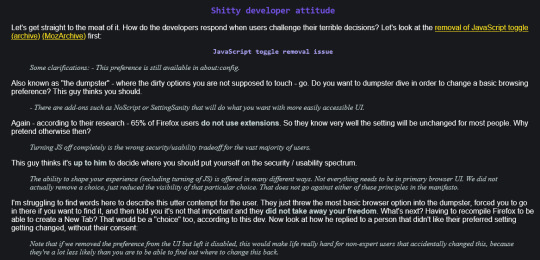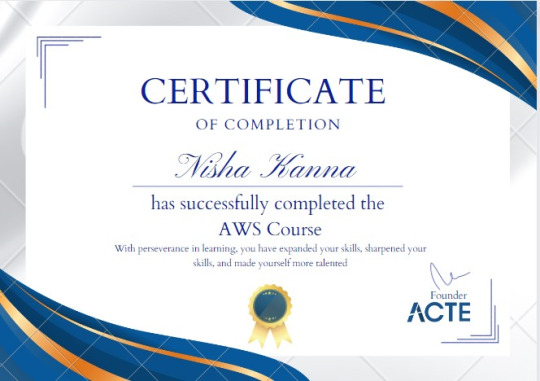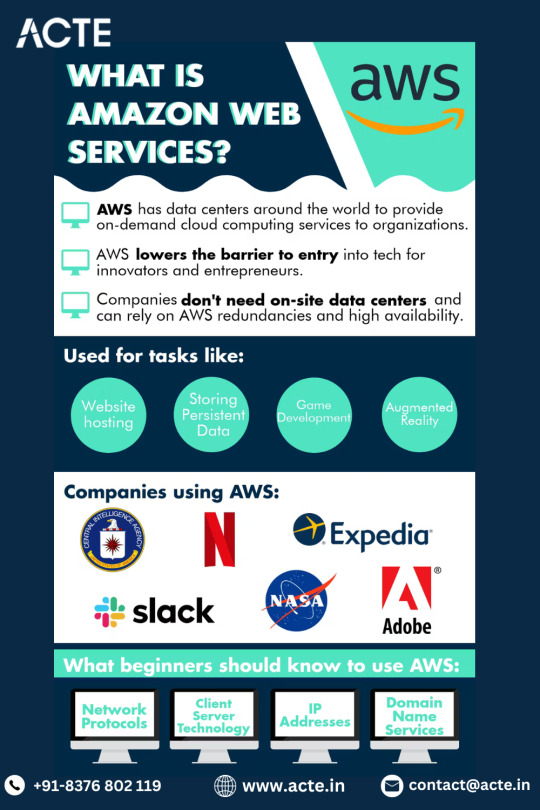#Web development basics without cost
Explore tagged Tumblr posts
Text
Graphics design courses for free,Web development basics without cost, Free graphics design fundamentals
Free Web Development Basics: Basics of Online Profitability Start with a deeper understanding of web development. Our free web development courses allow developers to gain insight without paying. Dive into the world of HTML, CSS, and JavaScript and gain the skills you need to create responsive, powerful websites. At [ASDC KANPUR], we believe everyone should receive a web development education that encourages people to contribute to the digital environment.
Free Graphic Design Basics: Visual communication is crucial to attracting online visitors. Our organization recognizes the importance of providing free artwork samples to aspiring designers. Share designs, search industry tools, and be creative without budget limits. From visual design to creating beautiful images, our graphic design courses equip students with the skills necessary to succeed in the visual digital age.
#Graphics design courses for free#Web development basics without cost#Free graphics design fundamentals
0 notes
Text
There's something I need this fandom to understand about Martin Kartin Blackwood.
IS he an expert manipulator? Yes. Does he have some serious skills in using people pleasing and framing and psychology to his advantage? ABSOLUTELY. He is gaslight, gatekeep, girlbossing his way through the first 3 seasons and we LOVE him for it.
On the other hand, though, I feel like we don't acknowledge enough as a fandom how isolating people pleasing can be in itself. I ranted about this in the tags of another Martin post, but basically, the person you create to be palatable to as many people as possible becomes a wall. A barrier between you and the outside world. Yes, everyone likes you, but that comes at the cost of no one knowing you in your entirety because you don't let them see the parts of you that are harder to swallow.
Martin effectively trapped himself in his own web of lies, suspended 30 feet away from his own life. He's dissociated from it all from the beginning, which is what made him the candidate Peter chose in the first place. He was always slated for The Lonely as much as he was The Web.
That leads me into my next point, which is that MARTIN PRE-LONELY WAS NOT ENTIRELY DISINGENUOUS. I see so many people implying that Martin straight-up wasn't anything like he said he was in the beginning. Common fandom reading comprehension L. He really does like people, and he really does want to be nice. It just also happens that you don't end up people pleasing to those lengths without it having developed as a defense mechanism!
Take the wall I introduced earlier. You surround yourself in this persona and swallow your teeth to protect yourself from other people. Realistically, it probably started with his mother, who is implied in Canon to not have been kind to him. There's a 3rd partner to Fight or Flight that doesn't get discussed very often, and it is "Fawn." This is the people-pleasing response that we see him exhibit. Ultimately, what he fears is rejection, and therefore, he fears being alone. He's nice and kind and polite and swallows his teeth in order to keep people around.
Post-Lonely Martin is the other extreme. He has no energy to please anyone anymore, and it doesn't serve him. He is tired and angry and constantly stressed. He doesn't bother hiding his teeth anymore, and he's prone to lashing out. Post-Lonely Martin is when he's surpassed his limit. Post-Lonely Martin is burnout.
As someone who relates to Martin Blackwood very much, I can tell you that the quiet moments where he's not deeply distressed either way is where we see the real Martin. He still loves and cares in private, and we see that over and over. The love is real. He just doesn't believe he deserves it in return, so he tries very hard to be someone who does. To "make up" for it.
Thank you and goodnight.
#tma#the magnus archives#martin blackwood#character analysis#fandom wank#ranting#i love him so much you don't understand
2K notes
·
View notes
Note
Hi there! Firstly, wanna say a huge thank you: your blog has inspired me to become more educated about cybersecurity and nutrition, and it’s the reason my brother and I now use Firefox! I came across this article and… it seemed to raise a lot of valid points about Mozilla, but I have no idea if they are true or not since I’m not that knowledgeable about tech, and they go against everything I’ve ever heard about Firefox. Wanted to ask if you wouldn’t mind giving it a quick read, if that’s not too much trouble, and explaining why it’s false/true? If you can, ofc, I realise that is a weird request, and I promise it&: not something I’d usually ask someone. I just thought I’d ask since you’re the only sort of ‘tech’ person I can think of whom I’d trust to know stuff about this. https://digdeeper.neocities.org/articles/mozilla
So this is a great example of someone reading a ToS uncharitably and extracting the most paranoid bullshit possible.
Aside from the absolute classic "oh noes they are storing info about what devices you use" (if you use firefox logged in mozilla will collect information about what device and OS you use to connect; they do this for a lot of reasons like figuring out what stuff the bulk of their users are using but also because *they can't display on your device without that data*) I want to zoom in on this as an example:

BTW, there is one really funny thing inside the account ToS (MozArchive) that I just have to mention: "We may suspend or terminate your access to the Services at any time for any reason, including [...] our provision of the Services to you is no longer commercially viable." The fuck? If you stop bringing them profit, you're gone. They really said that! To me, this is a roundabout admission that your data is being sold. And if it's not worth much (for whatever reason), then you get kicked out.
This person is highlighting the idea that they may cut you off from services if the provision of those services is no longer commercially viable. This author is saying "FIREFOX WILL BOOT YOU WHEN YOU STOP BEING A PROFITABLE LITTLE PAYPIG FOR THEM"
But. Okay. Let's go look at that section of the ToS:

These Terms will continue to apply until ended by either you or Mozilla. You can choose to end them at any time for any reason by deleting your Mozilla account, discontinuing your use of the Services, and if applicable, unsubscribing from our emails. We may suspend or terminate your access to the Services at any time for any reason, including, but not limited to, if we reasonably believe: (i) you have violated these Terms, (ii) you create risk or possible legal exposure for us; or (iii) our provision of the Services to you is no longer commercially viable. We will make reasonable efforts to notify you by the email address associated with your Mozilla account or the next time you attempt to access the Services. In all such cases, these Terms shall terminate, including, without limitation, your license to use the Services, except that the following sections shall continue to apply: Indemnification, Disclaimer; Limitation of Liability, Miscellaneous.
Bud. This says "we are not obligated to provide services to you and we may stop providing services that cost us more money to maintain than is viable." This isn't about selling your data, this is about backwards compatibility and sunsetting projects. They don't have to keep providing access to services they're no longer developing nor bend over backwards to make sure that you can keep running a version of the browser that uses the extensions they dropped support for ten years ago.
Ugh. I got to the section where they talk about cucking for manifest3 and jesus this asshole. Manifest 3 is a defacto set of web standards that are changing because google has so much market share as a browser that if they do something everybody else has to follow or they're going to break basic functionality; if they don't make these changes eventually a shitload of websites just will not work on firefox. WAY more than currently experience this problem. Nobody is happy about manifest 3 and the fact that mozilla put out a press release about coming manifest 3 changes (that was not positive!) doesn't mean they're happy about getting dragged along by the nose; this blogger would prefer something like them refusing to adopt those standards, but all that would happen is that they'd lose more users because less shit would work on firefox browsers since people write their sites for chrome first and anything else second if at all.
This writer also gripes a lot about things like "mozilla took away this functionality for the sake of security and SURE you can change that by going into the configurations but it should be an option right in the first panel of the settings what are they really trying to hide???" and they're not trying to hide anything bud they're trying to make a functional browser with intuitive menus for people who aren't power users.

Like they want to be able to do everything they want and they want to be able to see the option in front of them at all times. It's a weird combination of "I know how to configure everything about this browser" and "if a setting is ever hidden behind a readmore it's a dark pattern and is an attack on user privacy." Like they gripe a lot about privacy and then link to a bunch of pages on mozilla where they explain their privacy settings and link to tutorials on how to hide the data that they just explained they collect.

Yeah this is someone I would walk away from in order to avoid getting into a fistfight.
"FOSS licenses are nice but they don't ensure quality" nobody said they did.
"FOSS licensed softwares don't always accept user participation in development" nobody said they did
"I can't change the actual code of firefox to remove things that I don't like don't tell me to fork it it has to be all or nothing mozilla specifically has to do what I want or it's user hostile" I can see why it would be hostile to you as a user fuck you dude this is why forks *exist* (also the "spyware" discussed is basic browser tracking stuff, the realistic necessities of how email work that make it not private by default like the PROTOCOLS are not private you can't get around that, and a lot of the stuff is opt out but improves functionality for day to day users, AND a lot of the tracking is specifically for people with logged-in accounts which are not necessary to use firefox like if you hate pocket don't use it my friend! I also hate pocket it is quite simple to never use it thanks)
"There's no justification for making the source code unavailable" my dude. https://hg.mozilla.org/mozilla-central/
"If they really cared about an open internet they'd work toward killing capitalism." Friend. I think there's very little more that a web browser could do to undermine the capitalist nature of huge chunks of the web and maintain a broad userbase than what firefox is doing.
I'm reminded of the time that I saw someone losing their shit about a linux distro that included chrome as *a* browser - not the default browser, but *a* browser.
It is an unpleasant fact that a lot of firefox's funding comes from google. That's part of why google is still the default search engine in Firefox and I read some similar articles decrying mozilla's residence firmly in Google's pocket a few years ago. I don't think there's anyone at mozilla who is genuinely pleased that their cheques are signed by google, but there are a ton of people at mozilla who are happy they can keep the lights on because getting paid by google means that they can do as much as they possibly can to create a functional browser that has a significant interest in privacy by default and that can be made *VERY* private by a dedicated user.
Anyway a lot of the stuff on this post is things like "a certificate expired five years ago and broke extensions and that means that mozilla is incompetent and hates users" or "eleven years ago there was a slapfight in the bug reporting forums between a user and a mod and the fact that the user was kicked after repeatedly being told his fix wasn't going to get made is censorship."
The big beefs at the center of this post are:
Mozilla collects data on users
Mozilla limits functionality that should be up to the users
Mozilla takes money from google
and my refutations are:
it does, and it is less than any other mainstream browser and is much much more transparent about what data is collected and how to prevent that data from being collected
A lot of the functionality they're discussing is still there and the stuff that isn't is allowing unsigned extensions which, dude, put a fork in it. They're not going to budge on unsigned extensions but the bar you have to clear to get signed is really really low; like this guy is LITERALLY saying "allow the installation of malicious extensions."
Yep. They do. This point reminds me of a lot of the people on tumblr who hate ads but also hate it when people pay for tumblr. As it turns out making things costs money, and making things used by millions of people costs *A LOT* of money.
I mean FFS one of the things this writer complains about is that Mozilla has a YouTube page.
This isn't just letting perfect be the enemy of good, it's letting perfect be the enemy of *functionally existing as a large organization in the modern world.*
Anyway, I'm glad you enjoy my blog, thank you for letting me know!
405 notes
·
View notes
Text
BRB... just upgrading Python
CW: nerdy, technical details.
Originally, MLTSHP (well, MLKSHK back then) was developed for Python 2. That was fine for 2010, but 15 years later, and Python 2 is now pretty ancient and unsupported. January 1st, 2020 was the official sunset for Python 2, and 5 years later, we’re still running things with it. It’s served us well, but we have to transition to Python 3.
Well, I bit the bullet and started working on that in earnest in 2023. The end of that work resulted in a working version of MLTSHP on Python 3. So, just ship it, right? Well, the upgrade process basically required upgrading all Python dependencies as well. And some (flyingcow, torndb, in particular) were never really official, public packages, so those had to be adopted into MLTSHP and upgraded as well. With all those changes, it required some special handling. Namely, setting up an additional web server that could be tested against the production database (unit tests can only go so far).
Here’s what that change comprised: 148 files changed, 1923 insertions, 1725 deletions. Most of those changes were part of the first commit for this branch, made on July 9, 2023 (118 files changed).
But by the end of that July, I took a break from this task - I could tell it wasn’t something I could tackle in my spare time at that time.
Time passes…
Fast forward to late 2024, and I take some time to revisit the Python 3 release work. Making a production web server for the new Python 3 instance was another big update, since I wanted the Docker container OS to be on the latest LTS edition of Ubuntu. For 2023, that was 20.04, but in 2025, it’s 24.04. I also wanted others to be able to test the server, which means the CDN layer would have to be updated to direct traffic to the test server (without affecting general traffic); I went with a client-side cookie that could target the Python 3 canary instance.
In addition to these upgrades, there were others to consider — MySQL, for one. We’ve been running MySQL 5, but version 9 is out. We settled on version 8 for now, but could also upgrade to 8.4… 8.0 is just the version you get for Ubuntu 24.04. RabbitMQ was another server component that was getting behind (3.5.7), so upgrading it to 3.12.1 (latest version for Ubuntu 24.04) seemed proper.
One more thing - our datacenter. We’ve been using Linode’s Fremont region since 2017. It’s been fine, but there are some emerging Linode features that I’ve been wanting. VPC support, for one. And object storage (basically the same as Amazon’s S3, but local, so no egress cost to-from Linode servers). Both were unavailable to Fremont, so I decided to go with their Chicago region for the upgrade.
Now we’re talking… this is now not just a “push a button” release, but a full-fleged, build everything up and tear everything down kind of release that might actually have some downtime (while trying to keep it short)!
I built a release plan document and worked through it. The key to the smooth upgrade I want was to make the cutover as seamless as possible. Picture it: once everything is set up for the new service in Chicago - new database host, new web servers and all, what do we need to do to make the switch almost instant? It’s Fastly, our CDN service.
All traffic to our service runs through Fastly. A request to the site comes in, Fastly routes it to the appropriate host, which in turns speaks to the appropriate database. So, to transition from one datacenter to the other, we need to basically change the hosts Fastly speaks to. Those hosts will already be set to talk to the new database. But that’s a key wrinkle - the new database…
The new database needs the data from the old database. And to make for a seamless transition, it needs to be up to the second in step with the old database. To do that, we have take a copy of the production data and get it up and running on the new database. Then, we need to have some process that will copy any new data to it since the last sync. This sounded a lot like replication to me, but the more I looked at doing it that way, I wasn’t confident I could set that up without bringing the production server down. That’s because any replica needs to start in a synchronized state. You can’t really achieve that with a live database. So, instead, I created my own sync process that would copy new data on a periodic basis as it came in.
Beyond this, we need a proper replication going in the new datacenter. In case the database server goes away unexpectedly, a replica of it allows for faster recovery and some peace of mind. Logical backups can be made from the replica and stored in Linode’s object storage if something really disastrous happens (like tables getting deleted by some intruder or a bad data migration).
I wanted better monitoring, too. We’ve been using Linode’s Longview service and that’s okay and free, but it doesn’t act on anything that might be going wrong. I decided to license M/Monit for this. M/Monit is so lightweight and nice, along with Monit running on each server to keep track of each service needed to operate stuff. Monit can be given instructions on how to self-heal certain things, but also provides alerts if something needs manual attention.
And finally, Linode’s Chicago region supports a proper VPC setup, which allows for all the connectivity between our servers to be totally private to their own subnet. It also means that I was able to set up an additional small Linode instance to serve as a bastion host - a server that can be used for a secure connection to reach the other servers on the private subnet. This is a lot more secure than before… we’ve never had a breach (at least, not to my knowledge), and this makes that even less likely going forward. Remote access via SSH is now unavailable without using the bastion server, so we don’t have to expose our servers to potential future ssh vulnerabilities.
So, to summarize: the MLTSHP Python 3 upgrade grew from a code release to a full stack upgrade, involving touching just about every layer of the backend of MLTSHP.
Here’s a before / after picture of some of the bigger software updates applied (apologies for using images for these tables, but Tumblr doesn’t do tables):

And a summary of infrastructure updates:

I’m pretty happy with how this has turned out. And I learned a lot. I’m a full-stack developer, so I’m familiar with a lot of devops concepts, but actually doing that role is newish to me. I got to learn how to set up a proper secure subnet for our set of hosts, making them more secure than before. I learned more about Fastly configuration, about WireGuard, about MySQL replication, and about deploying a large update to a live site with little to no downtime. A lot of that is due to meticulous release planning and careful execution. The secret for that is to think through each and every step - no matter how small. Document it, and consider the side effects of each. And with each step that could affect the public service, consider the rollback process, just in case it’s needed.
At this time, the server migration is complete and things are running smoothly. Hopefully we won’t need to do everything at once again, but we have a recipe if it comes to that.
15 notes
·
View notes
Text
The Disposable Era of Cartoons

There exists many cartoons in the world that a vast majority never really bring up, and that's okay. Not everyone can watch everything all the time and you can argue that we only scratch the surface since the beginning. I've always had this deep seeded thought however of how animation's been treated, notably of tv shows. Browsing my usual "streaming" sites, I often come upon a show I've never heard of before. One just recently was Zokie of Planet Ruby, a series made by Nelvana, hosted by Nickelodeon, with its entire first season dropped on Amazon Prime on the last day of 2023. Overall, it's not a show I'm interested in, but how it was just dumped onto streaming upon other factors like that got deep seeded thought resurfacing into a theory. A theory regarding the potential era where excess is reaching its apex.

Animated TV shows I say are more arduous to make than films. Not to say films are more effortless to produce, god no, but have better limits given you'll have a set script and runtime to work off of as opposed to having to constantly produce multiple at a time for episodes ranging from 7 to 22 minutes. We work on a timeline where it's hard to believe any new story isn't derivative of already told stories, but the beauty does come in how we're able to transform them with new purposes and concepts. The workload however can be a lot many recognize but don't grasp themselves only as outsiders. The pitch getting greenlit is just the big toe in the door, finally stepping in is a matter of juggling multiple episodes a day, revising and editing, deliveries to the animators, all for the hope that it gets back in time to air. This is where I've come to appreciate The Simpsons, good and bad. Regardless of a recent season's quality, it's undoubtedly difficult to schedule fresh ideas that can stick with the same concepts for 30+ years, all to meet the quota by the beginning of the autumn season. Things have shifted thanks to streaming.

In retrospect, what felt like a novel idea was inevitably gonna turn into a capitalistic nightmare. It makes some sense that Netflix wouldn't have a monopoly on hosting every show from cable TV to be put on their newly founded streaming site in 2007. It wouldn't have been long before every other studio threw their hat in, developing their own stream sites with the properties they made and owned themselves. Competition is natural, but now you're basically spending the same prices as cable or satellite if you wanted to watch every show you remembered seeing on TV. Sites like Tubi and PlutoTV I say are the saving graces where you can shockingly find a ton of film/shows old and new for free, but you've probably seen shows and films getting removed from the sites they originate from, either to be traded to another site or written off for good because investment returns weren't a shake 'n bake. All this is because of rights ownership and a complex web of cost cutting against the people behind said shows and films. What does this mean for cartoons, though?

Like TV shows, you're gonna have a few poster boys upon a ton of shows nobody beyond avid seekers are gonna bother remembering. This has been a trend long in the making, but while many shows can be greenlit and made it can be a crapshoot as to whether the company actually believes in that show enough to market it. For Nickelodeon, it's an open secret that any cartoon not an instant hit like Spongebob, despite little promotion from the company, would be chucked onto the Nicktoons network to run out their remaining episodes. With streaming however, you'd either get something like Zokie of Planet Ruby where everything's dumped without warning or Glitch Techs where it's stuck in development limbo with half its episodes un-aired or incomplete. This isn't just with Nick however. Disney and Cartoon Network has had its fair share of duds everyone's slept on if they weren't massively eyecatching regardless of quality. The fates of their existence is dependent on who's keeping an eye on the companies. This isn't to say shows like Infinity Train and Final Space, which got removed digitally back in October and December respectively, didn't have their supporters who expressed outrage. It's to say other shows couldn't get that level of reported support, and I feel it's only going to get worse.

This is what I believe amounts to the theoretical "Disposable Era" of television, where we aren't just having companies dispose shows but create shows that are purposefully disposable. For websites designed to stream cyclically endless content, this will mean an exponential ton of commissioned projects for cheap that anyone will pick up once, never watch again, and can be written off immediately after a small period because no one outside the crew responsible would notice, incapable of viewing unless someone miraculously torrents everything. While I've brought up TV in general as opposed to just animated stuff, I personally feel the efforts and imaginative possibilities of animation count more for the generations that grow up with them as much as the influences they can have on artists. And I can feel it's discouraging for creators to know that their work can be eventually assembly lined, worst than reality tv, and then erased for tax breaks because nobody thought about them for more than the weekend they binged it all.

This is all if you don't account for anime studios like MAPPA which are a whole other horrifying story
I say "theoretical" because we aren't that far to where it could be possible. Shows do take time to make, and even if companies are pushing AI it's barely able to be anything more than an asset for certain cases. People have their reasonable fears, but an animated show fully AI generated that lasts more than 2 7-minute episodes, at this point in time, is a wet dream from investors. AI will not easily replace the craft, but the craft will be abused year after year with of how many shows get greenlit, made within a couple years, only to be thrown out when the numbers don't appease. This doesn't mean we won't get quality gems, but the rough they come from will pile more and more, and the gems some find that the majority will ignore will be written off and vaulted. I say the inception behind my theory wasn't exactly from the recent stuff like David Zaslav or Paramount's haphazard treatment of their content, it goes a little further back.

Hanazuki: Full of Treasures wasn't a huge series back in 2017, but it was one I enjoyed a lot when it was premiering on Youtube at the time. After its first season finished, Hasbro would produce a theatrical short to coincide with the My Little Pony movie in October. This is where I felt things fell apart. While the film was a commercial success, the short was basically overshadowed and I can't help imagine was what affected the series by the time it got a season two. 2019 was where Hanazuki not only got its broadcast season cut, Hasbro would basically start erasing its existence while supposedly having in development limbo since. While it was all thankfully reuploaded, you wouldn't have been remiss to know Hasbro couldn't even allow it to stay on Youtube after its TV broadcasting.
Everything surrounding rights ownership and royalties has basically developed an endless turmoil of how shows and their crew are treated. I don't blame anyone for not discussing or mentioning everything that gets to exist. Variety is never a bad thing, and sometimes people want certain things because again not everyone thinks or enjoys stuff homogeneously. It's just always increasingly bothered me that so much can get pumped out to be either taken away or left there for people to stumble across. TV's become Youtube but more business heavy where creativity is a tightrope of whether their appeal gets to live for more than a week or not. Like Youtube though, can also be lost to time to no one looking back. Let's just say David Zaslav running WB is only considered the worst because he's become the biggest face of an open secret. He could very well be the beginning of a shift that could lead us into the Disposable Era, and it's anyone guess of how bad it could get.

With all this said, I don't believe preventative hope can't exist, especially without the effort. Piracy is already doing enough for preservation and availability, even if you gotta have adblock to watch them properly. More creators I feel should learn and process the rights they can have with their properties. If there's anything I learned from artists Bill Watterson and Making Fiends' creator Amy Winfrey, is that production syndicates will abuse their knowledge of the law to do as they see fit, especially when it comes down to what you're offering them. The eventual animators and VFX work strikes could provide something more stable, but that's all in due time. How much the average audience member can retain or hyperfixate on is not something to concern, rather that it happens at all. The best solution is finding a middle ground between the disposable and sentimental; more people being vocal about good stuff they found no matter how small. There can be pushback from online lethargic asshats, but it's far better than complaining about the multitude of reboots or how woke everything's become. Something is only as disposable as nobody proclaims otherwise.

but that's all just a theory.
#cartoons#animation#television#cable tv#streaming services#film theory#theory#media preservation#long post#essay
17 notes
·
View notes
Text
Computer Networks: Basics, Types, and Benefits Explained
Computer networks are a big part of today’s highly automated world. They connect people, systems, and devices, making communication and resource sharing effortless. Whether it’s examining the internet, collaborating on projects, or sharing files, computer networks play a vital role in both personal and professional environments. We’ll cover the basics of computer networks, discuss their different types, and see the benefits they deliver.

What is a Computer Network?
A computer network is basically a system where multiple devices are linked together to share resources and exchange data. These devices can include laptops, mobile phones, servers, and networking equipment like routers. Networks enable smooth communication and allow devices to work together efficiently, making everything from browsing the web to managing complex business operations much easier.
Types of Computer Networks
Personal Area Network (PAN):
Personal Area Networks are designed as small networks intended for individual purposes. They usually span a limited distance and link devices such as.
smartphones, laptops, and tablets. For instance, connecting your phone to your computer via Bluetooth forms a simple PAN.
Local Area Network (LAN):
LANs are commonly used in homes, schools, and offices to connect devices within a limited area. For example, to allow employees to share files and printers seamlessly, all the computers in an office might be connected to a LAN.
Wide Area Network (WAN):
A WAN stretches over a significantly larger territory, often connecting devices or LANs across cities, countries, or even continents. The internet is the most well-known example of a WAN, authorized global connectivity.
Metropolitan Area Network (MAN):
Sitting between LANs and WANs, a MAN is typically used to connect networks across a campus or city. Cable TV networks are a common example of a MAN.
Wireless Networks:
Wireless networks use technologies like Bluetooth or Wi-Fi to connect devices without cables. They’re widely used in offices, homes, and public places, offering convenience and mobility.
Key Components of Computer Networks
Devices (Nodes): Servers that interact within the network these include computers and smartphones.
Connections (Links): The physical or wireless pathways that transfer data between devices.
Protocols: These are the rules that control data transmission, such as TCP/IP, to maintain smooth communication.
Switches and Routers: Switches connect devices in a network, while routers link different networks together.

Benefits of Computer Networks
Resource Sharing:
Networks make things easy to share like files, printers, and software applications, reducing the need for duplicate resources.
Seamless Communication:
With instant messaging, email, and video calls, networks ensure quick and authentic communication, no matter how far away are you.
Cost Savings:
By collecting resources and data storage, networks cut down on operational costs, especially for businesses.
Anywhere Access:
Modern networks allow you to access data from any connected device, whether you are at home or on the go.
Scalability:
As your needs develop networks will grow too, by supporting more users and devices over time.
Increased Productivity:
It reduces delays in automated processes and real-time data sharing and streamlines workflows, boosting efficiency.
Why Computer Network Skills Are Crucial for Entry-Level Corporate Roles
For those starting their careers, knowledge of computer networks can be a significant asset:
Essential for Office Environments:
In today's world, most workplaces rely on LANs and WANs for everyday operations. Knowing how these networks function allows employees to balance basic connectivity issues, making sure work stays on track without interruptions.
Supports Collaboration Tools:
Corporate tools like Microsoft Teams, Slack, and cloud-based systems depend heavily on networks. Understanding their underlying principles helps entry-level employees adapt quickly to these platforms.
Enhances Problem-Solving Skills:
Entry-level employees with networking knowledge can help IT, teams, by identifying and resolving minor network problems, exhibiting their value early on.
Boosts Technical Proficiency:
Networking skills indicate a candidate’s technical potential, giving them a head start in industries where tech literacy is required.
Prepares for Future Roles:
As technology makes progress, advanced networking concepts like cybersecurity and IoT integration are becoming integral. Early experience with networks lays a strong beginning for growth in these areas.
Challenges of Computer Networks
Security Risks: Networks are at risk of threats like hacking and malware, requiring robust security measures.
Cost of Setup: High-quality network infrastructure can be costly to install and maintain.
Technical Complexity: Balancing and managing networks frequently need specialized skills.
Conclusion
Computer networks are essential in today’s globalized world. From pushing day-to-day operations in businesses to enabling global communication, their impact is wide-ranging. For aspiring professionals, having computer networking skills can provide a competitive advantage, especially in entry-level corporate roles where technical knowledge is highly valued. By understanding the basics of networks and their benefits, individuals, and organizations can unlock new levels of productiveness and innovation.
I mastered Computer Network at NIPSTec, which is renowned as the best Computer Network institute in Delhi. If you're in Delhi and looking for top-notch training in computer networks, visit NIPSTec for expert guidance and practical learning.
2 notes
·
View notes
Text
How Digital Marketing Training Can Help You Start Your Own Business

Starting your own business in today’s digital age means navigating a complex online landscape. Consumers are constantly engaging online, which means a strong digital presence is essential for any new business. However, understanding and mastering the tools and strategies required for effective digital marketing can be challenging without the right training. This is where a digital marketing training institute becomes invaluable. With the right digital marketing skills, you can drive your business's growth from the ground up.
In this guide, we’ll explore how digital marketing training can provide a solid foundation for launching a business. By examining core skills, tools, strategies, and expert tips, you’ll understand how digital marketing training can be a game-changer for entrepreneurs.
1. Building a Strong Online Presence
The first and most essential step in creating a successful business is establishing a credible online presence. Digital marketing training teaches you the importance of branding, website development, and content creation, helping you build a brand that resonates with your target audience.
Personal Branding: Training will help you identify your unique value proposition and communicate it effectively.
Website Development Basics: Many digital marketing training programs cover web development basics, helping you create a user-friendly, SEO-optimized website.
Content Creation: Content is the backbone of any digital strategy. Learning how to create engaging blog posts, videos, and infographics will attract and retain customers.
Expert Tip:
Use free tools like Canva for graphic design and WordPress or Wix for creating a basic website to get started.
2. Understanding SEO to Attract Organic Traffic
Search Engine Optimization (SEO) is crucial to ensure that your business can be found by potential customers. A digital marketing training institute will provide comprehensive knowledge on how SEO works, including keyword research, on-page SEO, and technical SEO aspects.
Keyword Research: Learn to identify and target keywords relevant to your business that your potential customers are searching for.
On-Page SEO: Training will cover techniques like optimizing titles, headers, and meta descriptions to improve search engine rankings.
Technical SEO: Advanced training may include aspects like website speed optimization, mobile compatibility, and sitemaps, which are essential for ranking well on search engines.
Expert Tip:
Tools like Ahrefs, SEMrush, and Google Keyword Planner can assist in finding and analyzing keywords to help you rank higher on search engines.
3. Utilizing Social Media to Build Brand Awareness
Social media platforms are powerful tools for promoting a business, but effective social media marketing requires strategy. Digital marketing training will teach you to create engaging content, understand analytics, and develop ad campaigns to increase reach.
Platform Selection: Training will help you determine which social media platforms align best with your target audience (e.g., LinkedIn for B2B or Instagram for younger demographics).
Content Strategy: You’ll learn how to craft posts that engage followers, tell your brand’s story, and drive interactions.
Advertising Campaigns: Learn how to use paid advertising effectively on platforms like Facebook, Instagram, and LinkedIn, helping you reach a wider audience at a relatively low cost.
Expert Tip:
Use scheduling tools like Hootsuite or Buffer to manage and track your social media posts, saving time and ensuring consistency.
4. Harnessing Email Marketing for Customer Retention
Email marketing is a highly effective channel for keeping customers engaged and building long-term loyalty. Through digital marketing training, you’ll understand the nuances of email marketing, from list building to crafting effective email campaigns.
Building an Email List: Learn strategies for collecting customer emails through website sign-ups, social media, and landing pages.
Crafting Email Campaigns: Training often covers how to write compelling emails, create drip campaigns, and send personalized messages.
Analyzing Email Performance: You’ll learn how to use analytics to measure open rates, click-through rates, and conversions, enabling you to refine your strategy.
Expert Tip:
Platforms like Mailchimp and Constant Contact are user-friendly options for beginners, offering templates, analytics, and automation options.
5. Leveraging Content Marketing to Educate and Engage
Content marketing is an excellent way to establish authority in your field and attract customers through valuable content. A digital marketing training institute will help you understand how to create a content calendar, generate relevant topics, and repurpose content across different channels.
Creating a Content Plan: Training will teach you to create a strategic plan that includes blog posts, videos, podcasts, and infographics.
SEO-Optimized Content: Learn how to structure content to rank well on search engines, helping your business attract organic traffic.
Repurposing Content: With guidance, you can maximize content by repurposing a blog post into social media snippets, videos, and newsletters.
Expert Tip:
Try using tools like Grammarly for proofreading and Yoast SEO to optimize content for SEO directly within WordPress.
6. Understanding Analytics to Make Data-Driven Decisions
Knowing how to interpret data is crucial for evaluating the success of your digital marketing efforts. Most digital marketing training programs include a module on analytics, focusing on metrics that matter most to new business owners.
Google Analytics: Learn how to track website performance, including visitor demographics, behavior, and traffic sources.
Social Media Analytics: Training will guide you on using platform-specific analytics to measure reach, engagement, and conversion on platforms like Facebook and Instagram.
Conversion Rate Optimization (CRO): Understand how to analyze conversion rates and make adjustments to improve customer acquisition.
Expert Tip:
Set up Google Analytics and Google Search Console from day one to monitor performance and make informed decisions based on real data.
7. Running Effective Digital Advertising Campaigns
Digital advertising can give new businesses an instant boost by reaching specific demographics. A digital marketing training program will teach you how to run effective campaigns on platforms like Google Ads, Facebook Ads, and LinkedIn Ads.
Creating Ad Campaigns: Training covers campaign structure, audience targeting, and budgeting.
Retargeting Ads: You’ll learn how to use retargeting to re-engage potential customers who have already visited your site.
Analyzing Ad Performance: Most programs cover ad metrics, allowing you to understand cost-per-click (CPC), conversion rates, and return on ad spend (ROAS).
Expert Tip:
When starting, allocate a small budget for A/B testing on platforms like Google Ads or Facebook Ads to determine what works best for your target audience.
8. Developing a Holistic Digital Marketing Strategy
A successful digital marketing strategy combines multiple channels and tactics to drive brand awareness and sales. Digital marketing training provides an understanding of how each marketing channel works together and teaches you how to develop an integrated strategy that aligns with your business goals.
Setting Goals and KPIs: Training will help you define measurable goals and key performance indicators (KPIs) to track progress.
Aligning Marketing Channels: You’ll learn to integrate SEO, social media, content, and paid ads into a cohesive strategy.
Tracking Progress and Adapting: Training emphasizes flexibility, encouraging you to continuously assess and adjust strategies based on results.
Expert Tip:
Tools like Trello or Asana can help you organize your marketing tasks, assign deadlines, and track progress effectively.
9. Gaining Industry Insights and Keeping Up with Trends
Digital marketing is constantly evolving. Enrolling in a digital marketing training institute helps you stay current on trends, tools, and best practices, which is essential for success in a competitive business landscape.
Industry Updates: Many training programs offer regular updates on industry trends, such as AI in marketing, voice search, and algorithm changes.
Networking Opportunities: Being part of a training institute often allows you to network with industry professionals, opening doors for partnerships, mentorships, and collaborations.
Access to Resources: Training institutes often provide access to exclusive resources like webinars, workshops, and case studies that keep you ahead of the curve.
Expert Tip:
Follow reputable sources like Search Engine Journal and HubSpot for regular industry updates and best practices.
Conclusion
Starting a business can be daunting, but with the right digital marketing training, you’ll have the tools and knowledge to succeed. A digital marketing training institute equips you with essential skills, from SEO and content creation to analytics and advertising, that can help drive growth for your new business. With guidance on creating a solid online presence, engaging with customers, and making data-driven decisions, digital marketing training is a valuable investment for aspiring entrepreneurs. By understanding and leveraging digital marketing strategies, you can position your business for success in a rapidly evolving digital landscape.
#digital marketing#search engine optimization#social media marketing#smm#search engine marketing#seo
2 notes
·
View notes
Text
Component Libraries: Should You Build Your Own or Use a Prebuilt One?

Component libraries are a vital tool in web application development in maintaining uniform design, shortening the time taken to develop web applications and improving reusability of the code. Some developers find this dilemma; should they create a component library or use an existing one? In addition, they help reduce the struggle while building well-designed and interactive websites because of the availability of animation-oriented UIs such as Accentricity UI among others. Now, let’s get more to the point in order to help you find the right way.
What is a Component Library?
Component libraries are collections of reusable UI elements such as buttons, forms, modals, and more— and are intended to reuse the components across several projects. Such libraries not only guarantee a consistent look of an application but also save time and costs during its implementation because the elements have been already coded. So, there's no need to build components from scratch.
Prebuilt Component Libraries

Prebuilt Component Libraries
Prebuilt component libraries are the ready-made collections of different UI components that are specifically designed and optimized for common use cases that developers can face during development. Some well-known examples include:
Material-UI (MUI):
A library based on React and it follows Google's Material-UI design, MUI allows a comprehensive set of components customization.
Ant Design:
It's an UI design system framework for enterprise-level products, ant design offers built-in themes and a rich set of UI components.
Bootstrap:
It's an widely-used CSS framework that provides basic components and a responsive grid system.
Pros of Prebuilt Libraries :
Rapid Development: Prebuilt libraries save a lot of time of the developers by providing pre-designed reusable components that you can quickly integrate into your project.
Standardized Design: They help ensure a consistent user experience across different screens and features.
Community Support: Many prebuilt libraries come with robust community support, providing a wealth of tutorials, plugins, and enhancements.
Cons of Prebuilt Libraries
Limited Customization: Customizing components to fit your unique design can sometimes be difficult, leading to constraints on flexibility.
Performance Overhead: Many prebuilt libraries come with extra features you may not need, which can bloat your codebase.

Pros And Cons of Prebuilt Libraries
Animation-Centric Libraries: Bringing UIs to Life
In recent years, a new category of libraries has emerged, specifically focused on providing built-in animations and smooth UI transitions. These libraries not only offer pre-designed components but also emphasize adding dynamic, interactive features to web applications.
Here are some popular examples of animation-focused libraries:
Lottie
Category: Animation Integration Library

Lottie:The industry standard for motion design
What it Offers: Lottie allows you to render animations created in Figma or Adobe After Effects as JSON files using the built-in plugins. These animations are then rendered natively on the web, offering high-quality motion without a heavy performance impact.
Why It’s Useful: Lottie is perfect for apps or websites requiring rich, scalable animations that are lightweight. It’s commonly used for logos, loading animations, and subtle UI effects. Unlike other component libraries, it focuses purely on bringing visual design elements from tools like Figma & After Effects into the web environment.
Accentricity UI
Category: Hybrid Component and Animation Library
What it Offers:
Accentricity UI combines traditional UI components with built-in support for smooth animations and transitions. It offers a wide range of components like buttons, forms, modals, and navigation menus, but with an added layer of predefined animations, making it easier to create interactive, dynamic interfaces.
In addition to these standard components, Accentricity UI provides responsive behaviors and subtle animation effects like hover states, fade-ins, and sliding transitions that enhance user engagement. The library's components are fully customizable, allowing developers to easily adjust animation timings, easing functions, and durations to match the look and feel of their brand, ensuring both visual appeal and performance across devices.
Why It’s Useful:
Think about it, what would be easy for a dev? Making a custom component with tons of animation which the dev has to write from scratch and polish it before the deadline or use a library, where the dev can make use of the library with the built-in support to combine the custom designed elements with smooth animations and transitions offered by the library.
It’s particularly helpful for developers who want the convenience of a prebuilt library but need polished, built-in animations to enhance user experience without writing complex animation code from scratch.
Framer Motion
Category: Animation-focused Component Library (React)

Framer Motion
What it Offers:
Framer Motion is a powerful library for React that allows you to create fluid animations and micro interactions with minimal effort. It supports interactive features like drag, scroll, and spring-based animations, which makes it ideal for interactive & highly animated UIs. It also provides easy-to-use APIs for gesture-based animations and layout transitions, offering developers extensive control over complex animations while maintaining simplicity in implementation.
Why It’s Useful:
Framer Motion combines the simplicity of component libraries with the flexibility of advanced animation frameworks, making it easy to enhance user interfaces with dynamic visual effects. It’s a great choice for React developers who want to integrate animation without compromising performance or adding significant overhead. With its built-in optimizations for smooth rendering, Framer Motion ensures high-quality animations that enhance both usability and visual appeal.
Should You Use Prebuilt Animation Libraries?
The role of animations is really important in web applications to enhance the UX(user experience), by making interfaces feel more fluid and interactive makes user's remember the website due to its great experience. Since users are constantly getting used to smooth effects, micro-interaction and dynamic feedback, animations are no longer viewed as a good to have feature but are rather considered as a must have feature. Prebuilt animation libraries like Framer Motion and GSAP (GreenSock Animation Platform) simplify this process by providing powerful, flexible tools that allow developers to integrate complex animations without having to manually manage every aspect of motion or dive deep into animation theory.
Advantages of Animation-Centric Libraries

Advantages of Animation-Centric Libraries
Ease of Use
Prebuilt animation libraries abstract away the complexities of coding animations from scratch. Without manually writing keyframes, easing functions, or browser-optimized transitions, developers can simply use predefined APIs to implement fluid animations. This drastically reduces development time, as many animation details are handled by the library, letting developers focus on building features and interactions rather than tweaking animations for performance or cross-browser compatibility. For example, with a few lines of code, animations can be applied to any UI element, making the development process much more efficient.
Advanced Features
Many animation libraries offer advanced features that go far beyond basic transitions like fade-ins and slide animations. These include timeline control, scroll-triggered animations, physics-based interactions, and even 3D transformations. For instance, timeline control allows developers to create synchronized sequences of animations, which can be used to create smooth, coordinated interactions across multiple elements. Scroll-based animations enhance user engagement by triggering effects as the user scrolls, perfect for parallax websites or content reveal effects. Physics-based animations, such as spring-based drag-and-drop or object bouncing, add natural, realistic movement to interactive elements, elevating the overall experience. Additionally, 3D transformations provide extensive control over how objects rotate, scale, or move in three-dimensional space, something that is cumbersome to achieve with native CSS alone.
See What Happens Next
#webdevelopement#werbooz#own website#build vs prebuilt component library#custom UI components#prebuilt UI libraries#web development#Material-UI#Ant Design#Bootstrap#Framer Motion#Accentricity UI#animation libraries#best UI libraries 2024#component library pros and cons#web app development#UI design optimization#web performance#web development trends
2 notes
·
View notes
Text
AWS Training: Your Ticket to Thrive in the Cloud Computing Revolution!
In’s rapidly evolving technological landscape, cloud computing has emerged as a game-changer, revolutionizing the way businesses operate and individuals engage with digital services. Among the numerous cloud service providers, Amazon Web Services (AWS) stands tall as a pioneer and leader in the field. Understanding the impact of AWS and gaining proficiency in its functionalities can be your passport to success in the world of cloud computing. This article aims to shed light on the significance of AWS training and how it can empower you to navigate the cloud computing revolution.

A Pattern Shift in Cloud Computing
Embracing AWS as a Leading Cloud Service Provider
As the demand for cloud-based solutions escalates, AWS has solidified its position as the go-to platform for individuals and organizations across the globe. With a versatile range of services encompassing computing power, storage, networking, databases, and more, AWS offers an unmatched infrastructure to support diverse business needs. By undertaking AWS training, you can unlock the full potential of these services, harnessing the capabilities of AWS to drive innovation, scalability, and cost optimization for your projects.
Mastering the Fundamentals: Essential Concepts and Services
Before delving into the vast AWS ecosystem, it is crucial to build a strong foundation by understanding the fundamental concepts and services. AWS training provides an organized curriculum that guides you, step by step, through the basics of cloud computing, AWS architecture, and key services like Amazon Elastic Compute Cloud (EC2), Simple Storage Service (S3), and Relational Database Service (RDS). By familiarizing yourself with these core components, you gain the necessary knowledge and skills to embark on your cloud computing journey confidently.
Navigating the AWS Training Journey
Comprehensive Learning Paths: From Newbie to Expert
AWS offers a diverse range of training options tailored to meet the needs of individuals at various skill levels. Whether you are a beginner looking to understand the basics or an experienced professional seeking to specialize in a particular domain, AWS training has got you covered. With structured learning paths designed for architects, developers, data engineers, and more, you can embark on a journey that aligns with your career aspirations. The systematic progression ensures that you acquire the right knowledge, hands-on experience, and certifications to excel in your chosen field.
Hands-On Labs and Real-World Scenarios: Learning by Doing
One of the most effective ways to master AWS is through hands-on experience, and AWS training excels in providing just that. By incorporating practical labs and real-world scenarios, training courses simulate the challenges you are likely to face in actual job roles. This experiential learning approach equips you with the ability to apply theoretical knowledge in practical scenarios, fostering a deeper understanding of AWS services and their practical implications. Furthermore, the training platform provides a safe environment for experimentation, enabling you to explore and experiment with different AWS configurations without the fear of disrupting production systems.
Expert Guidance and Community Support: Learning Together
AWS training goes beyond self-paced courses, offering opportunities for interaction and collaboration with experts and peers. Instructors with rich industry experience provide guidance and support throughout your learning journey, ensuring that you receive the necessary expertise to overcome hurdles and gain insights from their practical wisdom. Additionally, AWS training fosters a vibrant community where learners can actively engage, share experiences, and seek advice from fellow enthusiasts. This sense of camaraderie and shared learning creates a supportive ecosystem that enhances your growth and enriches your AWS training experience.

AWS Certifications: Showcasing Your Proficiency
Recognized Industry-Standard Certifications
To validate your AWS expertise and stand out in a competitive job market, AWS offers a comprehensive certification program. These industry-recognized certifications are a testament to your proficiency in various AWS services and demonstrate your commitment to continuous learning. By obtaining AWS certifications, you gain a competitive edge, making you an attractive candidate for job opportunities that require cloud computing skills. From foundational certifications like AWS Certified Cloud Practitioner to specialized roles like AWS Certified Solutions Architect or AWS Certified Machine Learning Specialist, AWS training equips you with the knowledge and credentials to showcase your capabilities effectively.
The cloud computing revolution is here to stay, and harnessing the power of AWS can unlock a world of opportunities. By investing in AWS training at ACTE institute, you equip yourself with the skills, knowledge, and certifications needed to thrive in this transformative landscape. From mastering the fundamental concepts to navigating the vast AWS ecosystem, the comprehensive learning paths, hands-on labs, expert guidance, and industry-recognized certifications pave the way for your success. Embrace the cloud computing revolution, embark on your AWS training journey, and witness firsthand how it propels you towards professional excellence in the ever-evolving world of cloud computing.
10 notes
·
View notes
Text
Unveiling Affordable VPS Web Hosting Providers: A Comprehensive Guide
In the ever-evolving landscape of online presence, Virtual Private Server (VPS) web hosting has emerged as a crucial element for businesses and individuals seeking optimal performance and reliability. In this comprehensive guide, we will unveil lesser-known yet highly reliable Affordable VPS Web Hosting Providers that are poised to redefine your digital experience.
Understanding the Importance of Affordable VPS Web Hosting
Before we delve into the specifics of our recommended providers, let's establish why investing in affordable VPS hosting is paramount for your online success. VPS hosting offers a middle ground between shared hosting and dedicated servers, providing the flexibility and control needed for robust digital operations.
Enhanced Performance and Stability
One of the primary advantages of VPS hosting is the allocation of dedicated resources. This ensures that your website enjoys consistent and reliable performance, even during peak traffic periods. The result? A seamless user experience that translates to improved search engine rankings.
Scalability for Growing Businesses
As your online presence expands, so do your hosting needs. Affordable VPS hosting allows for easy scalability, enabling your website to accommodate increased traffic and resource requirements without compromising speed or reliability. Search engines reward websites that can handle growth seamlessly, making scalability a crucial factor for ranking success.
Isolation for Security and Reliability
VPS hosting provides a level of isolation that shared hosting cannot match. Each VPS operates independently, ensuring that the actions of other users on the same server do not impact your website's performance. This isolation enhances security, a factor search engines consider when determining rankings.
The Top Affordable VPS Web Hosting Providers You Didn't Know About
Now, let's explore the hidden gems in the world of affordable VPS hosting that can elevate your website's performance without breaking the bank.
1. l3webhosting
l3webhosting stands out for its commitment to providing high-quality VPS hosting at an affordable price point. With data centers strategically located globally, they offer excellent uptime and fast loading times, factors that search engines prioritize for ranking.
2. HostPulse Solutions
HostPulse Solutions combines affordability with feature-rich VPS hosting plans. Their intuitive control panel makes managing your virtual server a breeze, and their customer support ensures you're never alone in navigating the digital landscape. This dedication to user experience aligns with search engine preferences, contributing positively to your ranking.
3. NexusNode
NexusNode excels in providing VPS hosting tailored to the needs of developers and businesses alike. Their commitment to using the latest technology ensures optimal performance, and their transparent pricing model resonates well with search engine algorithms, promoting trustworthiness.
Choosing the Right Affordable VPS Web Hosting Provider for You
While the providers mentioned above offer exceptional value, it's essential to align your choice with your specific needs. Consider factors such as the technical requirements of your website, your budget constraints, and any additional features that may enhance your overall experience.
1. Assessing Your Technical Requirements
Before making a decision, carefully evaluate the technical specifications offered by each provider. Consider factors such as RAM, storage, and bandwidth to ensure your website has the resources it needs to thrive.
2. Budget Considerations
While affordability is a key criterion, it's crucial to strike a balance between cost and quality. Opt for a provider that offers competitive pricing without compromising on performance or customer support.
3. Additional Features
Look beyond the basics. Consider whether the hosting provider offers additional features such as automated backups, SSL certificates, or a user-friendly control panel. These features contribute to a positive user experience, which search engines reward with higher rankings.
Boost Your Website's Ranking Today
In conclusion, affordable VPS web hosting is not only a practical choice for your budget but also a strategic move to enhance your website's ranking on search engines. By choosing a provider that aligns with your specific needs and prioritizes performance and reliability, you're laying the foundation for online success.
2 notes
·
View notes
Text
Web development basics without cost, Free graphics design fundamentals, SEO basics without fees
Towards the Dynamic in the digital age, it is crucial to stay ahead of the curve. This applies to individuals and businesses. Recognizing the importance of equipping candidates with the skills necessary to succeed online, [ASDC Kanpur] is pleased to offer a variety of courses designed to help students develop the basics of website, free graphic design, and SEO Content – all at no cost to you.
0 notes
Text
Just Saw Madame Web!
And you silly bastards made the mistake of following me so here come
Opinions
about what is easily the Okayest superhero movie I've seen in a while. I'm not going to bother writing around spoilers for a movie you're not going to pay American currency to watch anytime soon, so hit the jump.

OK, things I liked: - The premise of someone whose power is basically all spider-sense as a protagonist is actually really interesting and I overall liked how her powers are portrayed. - Time is spent genuinely developing the relationship between Madame Web and the girls. It feels earned when they're all super close at the end of the movie. - Dakota Johnson and Adam Scott infuse Madame Web and Ben Parker's friendship with some genuine chemistry. I'm sucker for a genuine platonic male/female best friendship, so I really appreciated it and wished there'd been more seen of it. - The film does a pretty good job portraying a murderous version of Spider-Man as terrifying. - Good foreshadowing with the fireworks warehouse. Infinitely superior to Itchy & Scratchy. - Madame Web's signature move is "crash through a wall and ram that fucker with a stolen car" and I buy that it works multiple times on Ezekiel because WHO DOES THAT?! - I liked Madame Web's disabling (imagine if I stopped the sentence here) not being portrayed as a fate worse than death or a karmic punishment or any of that rot. She's blind. She's in a wheelchair. She has a family and psychic powers and is happy. Things I didn't Not Like: - Madame Web and the Spider-Women become the Birds of Prey in the indeterminate future. It's a weird idea, but not without interesting potential. Things that annoyed me: - An ambiguously brown mercenary with spider powers. That are several characters from the comics that might fit that description (Tarantula, Black Tarantula, Devil-Spider) but not Ezekiel Sims. Always annoys me when comic book movies do that. - 11th hour ability to create psychic duplicates! Lazy. - Why must the blood/DNA/venom of creatures be the cure for genetic diseases in Sony spider-flicks? Are Madame Web and Morbius going to form a support group? - The film's "Web" mythos felt slapdash and poorly considered. Which is a little weird, because there's been plenty of weird Spider-Mysticism in the last 20 years of Spider-Man comics that makes a lot more sense than this. - The birth of the unnamed Peter Parker is totally unnecessary. - The whole Peru trip feels really unnecessary. More accurately, it is necessary for Cassandra Webb to investigate her past. It is considerably less necessary for her to do it Eat, Pray, Love style. Overall, I recommend streaming it when it comes to Netflix in like a month (or less, honestly). I am, however, a sucker for a connected-to-nothing superhero movie that clearly didn't cost $200 million (I grew up on 'em) and attractive women in belly shirts, short skirts, and low-rise jeans.
#madame web#spider-man#sonyverse#movies#marvel#dakota johnson#okayest movie since morbius#which was the okayest movie since venom 2#which was the okayest movie since bloodshot
3 notes
·
View notes
Text
AWS Mastery Unveiled: Your Step-by-Step Journey into Cloud Proficiency
In today's rapidly evolving tech landscape, mastering cloud computing is a strategic move for individuals and businesses alike. Amazon Web Services (AWS), as a leading cloud services provider, offers a myriad of tools and services to facilitate scalable and efficient computing. With AWS Training in Hyderabad, professionals can gain the skills and knowledge needed to harness the capabilities of AWS for diverse applications and industries. Whether you're a seasoned IT professional or a beginner eager to dive into the cloud, here's a step-by-step guide to learning and mastering Amazon AWS.

1. Start with AWS Documentation:
The foundation of your AWS journey begins with the official AWS documentation. This vast resource provides detailed information, tutorials, and guides for each AWS service. Take the time to familiarize yourself with the terminologies and fundamental concepts. Understanding the basics lays a solid groundwork for more advanced learning.
2. Enroll in AWS Training and Certification:
AWS provides a dedicated training and certification program to empower individuals with the skills required in today's cloud-centric environment. Explore the AWS Training and Certification portal, which offers a range of courses, both free and paid. Commence your AWS certification journey with the AWS Certified Cloud Practitioner, progressively advancing to specialized certifications aligned with your career goals.
3. Hands-On Practice with AWS Free Tier:
Theory is valuable, but hands-on experience is paramount. AWS Free Tier allows you to experiment with various services without incurring charges. Seize this opportunity to get practical, testing different services and scenarios. This interactive approach reinforces theoretical knowledge and builds your confidence in navigating the AWS console.
4. Explore Online Courses and Tutorials:
Several online platforms offer structured AWS courses. Websites like Coursera, Udemy, and A Cloud Guru provide video lectures, hands-on labs, and real-world projects. These courses cover a spectrum of topics, from foundational AWS concepts to specialized domains like AWS security and machine learning. To master the intricacies of AWS and unlock its full potential, individuals can benefit from enrolling in the Top AWS Training Institute. This training ensures that professionals gain the expertise needed to navigate the complexities of AWS, empowering them to contribute effectively to their organizations' digital transformation and success.
5. Build Projects and Apply Knowledge:
The true test of your AWS proficiency lies in applying your knowledge to real-world projects. Start small, perhaps by deploying a static website on Amazon S3. As you gain confidence, move on to more complex projects, such as configuring a virtual server on Amazon EC2 or creating a serverless application using AWS Lambda. Practical application solidifies your understanding and hones your problem-solving skills.
6. Join AWS Communities and Forums:
Learning is a collaborative effort. Joining AWS communities and forums allows you to connect with like-minded individuals, seek advice, and share your experiences. Platforms like the AWS Developer Forums provide a space for discussing challenges and learning from others' insights. Networking within the AWS community can open doors to valuable opportunities and collaborations.
7. Read AWS Whitepapers and Case Studies:
AWS regularly publishes whitepapers covering best practices, architecture recommendations, and real-world case studies. Delve into these resources to gain deeper insights into how AWS services are applied in diverse scenarios. Whitepapers provide a wealth of knowledge on topics such as security, scalability, and cost optimization.
8. Experiment with AWS CLI and SDKs:
Command Line Interface (CLI) proficiency is a valuable skill for any AWS practitioner. Familiarize yourself with the AWS CLI, as well as Software Development Kits (SDKs) for your preferred programming languages. Automating tasks through the CLI and integrating AWS services into your applications enhances efficiency and allows for more sophisticated configurations.
9. Attend AWS Events and Webinars:
Stay abreast of the latest AWS trends, updates, and best practices by attending AWS events, webinars, and conferences. These platforms often feature expert speakers, product announcements, and in-depth discussions on specific AWS topics. Engaging with industry leaders and experts provides valuable insights into the current state and future direction of AWS.
10. Stay Updated and Adapt:
The cloud computing landscape is dynamic, with AWS continually introducing new services and updates. Subscribe to AWS newsletters, follow AWS blogs, and listen to AWS-focused podcasts to stay informed about the latest developments. Continuous learning is key to adapting to the evolving cloud technology landscape.

In conclusion, mastering Amazon AWS is a journey that combines theoretical understanding, hands-on experience, and active participation in the AWS community. By following these ten steps, you can develop a comprehensive skill set that empowers you to leverage AWS effectively, whether you're building applications, optimizing processes, or advancing your career in the cloud.
2 notes
·
View notes
Text
Understanding Reseller Hosting: A Gateway to Hosting Business
In the ever-evolving digital landscape, web hosting is a fundamental service that enables websites to be accessible on the internet. Whether you're an aspiring entrepreneur looking to dive into the web hosting business or a website owner seeking to better comprehend the hosting industry, understanding the concept of reseller hosting is crucial. In this blog, we'll explore the ins and outs of reseller hosting and how it can open doors to new opportunities in the world of web hosting.
The Basics: What is Reseller Hosting?
Reseller hosting is a unique hosting arrangement that allows individuals or businesses to purchase hosting resources from a primary hosting provider and then resell them to their own clients. Essentially, it's like being a hosting middleman, connecting the services of a larger hosting company with the end-users.
How It Works:
Resource Procurement: A reseller hosting provider starts by acquiring a significant amount of hosting resources from a larger web hosting company. These resources typically include server space, bandwidth, and various hosting features.
Customized Hosting Plans: With these acquired resources in hand, resellers have the flexibility to craft customized hosting plans. These plans can be tailored to meet the specific needs and preferences of their clients. This means they can offer a variety of hosting packages with varying features, storage capacities, and pricing.
White Labeling: Many reseller hosting services offer the option of white labeling. This means that the hosting services are presented under the reseller's own branding and business identity. It gives resellers the appearance of running their own hosting business.
Management and Support: Resellers take on the role of managing their hosting clients. They provide customer support, ensuring that the hosting services run smoothly for their customers. They become the primary point of contact for their clients, handling everything from technical inquiries to troubleshooting.
Profit Generation: Reseller hosting is not just about facilitating hosting services; it's a business model that allows individuals or businesses to generate revenue. Resellers set their own pricing and earn profits from the margin between what they pay the primary hosting provider and what they charge their clients.
Scalability: As the reseller's client base grows, they can easily scale up their hosting resources by purchasing more from the primary hosting provider. This scalability allows them to accommodate more clients and expand their hosting business.
Technical Support: While resellers manage customer support, they may also rely on the primary hosting provider for technical assistance and server management. This collaborative approach ensures a seamless hosting experience for clients.
Who Can Benefit from Reseller Hosting?
1. Entrepreneurs and Startups: Reseller hosting offers an excellent entry point into the web hosting industry. It requires less initial investment and allows entrepreneurs to establish their own hosting brand.
2. Web Designers and Developers: Those in the web design and development field can offer hosting services as part of their packages, providing an all-in-one solution to their clients.
3. Website Owners: If you have multiple websites, reseller hosting can be a cost-effective way to manage them all from a single control panel.
In Conclusion
Reseller hosting is more than just a hosting service; it's a gateway to the hosting business. It empowers individuals and businesses to enter the web hosting industry without the need to invest in and manage their physical servers. By leveraging the resources of a larger hosting provider and offering customized hosting solutions, resellers play a vital role in the hosting ecosystem. They bridge the gap between hosting giants and website owners, making the internet more accessible to all.
Whether you're considering a career in hosting or searching for the right hosting solution for your websites, reseller hosting offers a versatile and profitable option worth exploring.

2 notes
·
View notes
Text
Releasing the Power of Browse Engine Optimization: Increase Your Online Presence as well as Drive Organic Website Traffic
Understanding the Fundamentals of Search Engine Optimization
In today's digital age, having a strong on the internet visibility is critical for companies to grow. Whether you're a small start-up or a reputable company, applying efficient seo (SEARCH ENGINE OPTIMIZATION) approaches can make all the difference in attracting possible customers to your web site. So, just what is search engine optimization? In basic terms, it is the technique of enhancing your site to rank greater on internet search engine results web pages (SERPs) and boost organic web traffic. By comprehending the basics of search engine optimization, you can harness its power to get to a broader audience and grow your online business.SEO involves a
range of strategies, including keyword study, on-page optimization, web link building, and also technological optimization. Keyword phrase research study is the foundation of any kind of successful search engine optimization technique. By recognizing the key words and also expressions your target market is searching for, you can customize your site material to match their intent. On-page optimization refers to enhancing various components on your website, such as meta tags, headings, as well as content, to make it more search engine-friendly. Link structure includes getting top quality backlinks from authoritative internet sites, which can improve your website's reputation as well as exposure. Finally, technical optimization focuses on boosting the technological facets of your site, such as website speed as well as mobile responsiveness, to enhance user experience and online search engine crawlability.The Benefits of Effective Browse Engine Optimization Executing reliable SEO practices
youtube
can have various benefits for your organization. Firstly, it can considerably boost your internet site's presence on online search engine result pages. By placing higher for appropriate key phrases, you raise the chances of drawing in natural web traffic, as users are extra most likely to click the leading results. This raised presence can lead to higher brand exposure, which consequently can result in more leads, conversions, as well as revenue.Another key benefit of SEO is its cost-effectiveness contrasted to other digital advertising strategies. Unlike paid marketing, where you need to pay for each click or impact, SEO is an organic, lasting method that does not need ongoing financial investment. By spending effort and time right into maximizing your website, you can create regular natural traffic without regularly spending for ads.Furthermore, SEO assists develop count on as well as reputation with your target audience.
When your internet site appears on the first web page of search results, individuals regard it as even more trustworthy and authoritative. This can lead to higher click-through prices as well as longer average time invested in your site, as
Read more here https://storage.googleapis.com/p4g/OptimizeNinja/SEO/How-to-rank-high-est-on-Google.html
4 notes
·
View notes
Text
Yes, I Got a Cloud Server for Free Forever Here’s How You Can Too.
Let me tell you a little secret: I'm running a cloud server right now—for zero dollars. No tricks, no expired trials, no surprise bills. Just forever free. And the best part? You can do it too.
This isn’t one of those “free for 12 months” offers that quietly auto-bills you after a year. This is 100% free forever, and I’ve been using it to host websites, run experiments, and even power a personal VPN.
Here's how I did it—and how you can get your own cloud server for free too.

🧠 First, Why Would You Even Want a Cloud Server? If you’re a dev, student, entrepreneur, or just someone who wants to mess around with tech, a cloud server is basically your Swiss Army knife. You can:
Host your own blog or portfolio
Deploy web apps
Run bots or automation scripts
Set up a secure VPN
Tinker with Docker, Node.js, Python, and other cool tools
Learn cloud infrastructure (and impress your next job interviewer)
But traditionally, cloud servers cost money. Not a lot—but still enough to be annoying if you’re bootstrapping.
🧨 The Hack: Free-Tier Cloud Servers (Yes, They’re Legit) Here’s the part most people don’t realize: some major cloud providers offer "always free" tiers. These aren’t trials. They’re permanent free resources designed to bring developers into their ecosystem.
Let me break down the best ones:
🟢 Oracle Cloud - The Real MVP What You Get (Always Free):
2 Arm-based virtual machines (VMs)
1 GB RAM each, up to 4 vCPUs
200 GB storage
10 TB/month of data transfer
👉 This is what I'm using. It’s not just a toy—this thing can run websites, apps, and even a Minecraft server (with some optimization). It’s shockingly good for something that costs nothing.
Pro Tip: Choose the Ampere A1 (Arm) VM when signing up. They're the magic machines that stay free forever.
🔵 Google Cloud Free Tier 1 f1-micro VM (in select regions)
30 GB HDD + 5 GB snapshot storage
1 GB outbound traffic
It’s more limited, but solid if you want to dip your toes into Google’s ecosystem. Great for small side projects or learning.
🟠 Amazon AWS Free Tier 750 hours/month of a t2.micro or t3.micro EC2 instance
5 GB S3 storage
Other bonuses like Lambda and DynamoDB
⚠️ This one’s only free for the first 12 months, so set a calendar reminder unless you want to wake up to a surprise bill.
Honorable Mentions (For Web Devs & Hobby Projects) Flyio – Run full-stack apps with generous free bandwidth
Render / Railway – Deploy static sites, APIs, and databases with ease
GitHub Student Pack – If you’re a student, you unlock a TON of free cloud goodies
⚠️ A Few Quick Warnings Before you go server-crazy:
Stick to free-tier specs (e.g. Oracle’s Ampere A1, Google’s f1-micro)
Watch bandwidth usage—10 TB sounds like a lot, until it isn’t
Avoid regions that aren’t free (yes, it matters where your VM is located)
Set up billing alerts or hard limits if the provider allows it
So… What Can You Actually Do With a Free Server? Here’s what I use mine for:
✅ Hosting my personal website (no ads, no downtime) ✅ Running a WireGuard VPN to stay safe on public Wi-Fi ✅ Testing code 24/7 without killing my laptop ✅ Hosting bots for Discord and Telegram ✅ Learning Linux, Docker, and server security
Basically, it’s my own little lab in the cloud—and I didn’t pay a dime for it.
Final Thoughts: Cloud Power in Your Pocket (For Free) In a world where subscriptions are everywhere and everything feels like a money grab, it's refreshing to find real value that doesn’t cost you anything. These cloud free tiers are hidden gems—quietly sitting there while most people assume you need a credit card and a corporate budget to get started.
So go ahead. Spin up your own free cloud server. Learn. Build. Break things. And have fun doing it—on someone else’s infrastructure.
🔗 Want to try it?
Oracle Cloud Free Tier
Google Cloud Free Tier
AWS Free Tier
1 note
·
View note